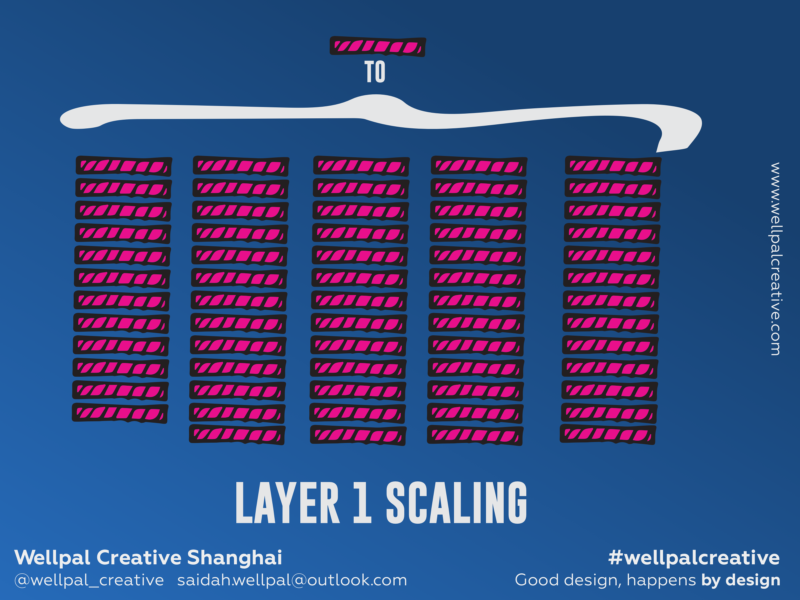Ethereum’s evolution from “Proof of work” to “Proof of stake”. WHAT does it even mean??
When you come across the terms Ethereum 1.0 and 2.0, they connect back to this evolution.
To be clear #1: Ethereum 2.0 did not necessarily REPLACE Ethereum 1.0 (as we would most of the time think when something is named this way). It is more of a compounding effect, 1.0 was the lego block needed for 2.0 to be build upon.
That said, let’s dive a little deeper.
Part 1: Scaling of ethereum efficiency and throughput
Layer 1 – upgrading the ethereum blockchain to be more powerful (more with more)
Move from a single blockchain to 64… Basically it is making the blockchain more powerful through “more with more” .
Eg. if its now 1 computer, it will have to be upgraded to 64 with internet connection.

The solution to doing this is to switch from using a set of validators (currently at about 222,000 validators) and letting all validators validate the same blockchain, to sample SRC (statistically representative committees) at random to represent the entire set and let them validate different blockchains (called Shards).
Layer 1 expected optimization: 100x

Layer 2 – doing more with less (using current resources more efficiently)
Goal: Minimize the cost of execution
Direction 1 – to use cryptography
Take a batch of transactions and instead of run each transaction individually, we construct a off-chain cryptographic proof, to proof that all these transactions are valid. The off-chain validation (instead on o-chain) aspect of it is to reduce cost as this is much cheaper to do.

Direction 2 – optimistic execution
Take the batch of transaction and put them on-chain, but don’t execute them.
Taking bonded executioners (they stake x amount of ETH) who will make “claims” about these transactions. These executioners pretty much request “trust” that they are capable of running their transaction.

What if they are not capable in the end?
There is a 7-day (or otherwise stated) dispute period where anyone can challenge the “claim”. The “judge” in this scenario is the “blockchain”. It will pass judgement for there to have been “fraud” or not and instruct to amend/correct the error/fraud.
Both options are expected to result in 100x improvement each.
Goal is to compound them on top of each other and generate a 10,000x scalability.
There are already different layer 2 solutions in place, utilizing 4 main categories built on our directions above:
- Sidechains also sometimes called plasma chains (ex. Polygon, OMG Network,..)
- State Channels, simplified these are similar to a pre-paid card, Gas is paid when opening and closing only. Transactions within your pre-paid amount don’t require individual gas.
- Roll-ups, Simplified, they execute smart contracts outside of layer 1 (main chain) but the transaction data is posted on layer 1, the main chain (*see WellPal simplification visual above).

